new posts in all blogs
Viewing: Blog Posts Tagged with: Mary Ann Hoberman, Most Recent at Top [Help]
Results 1 - 11 of 11
How to use this Page
You are viewing the most recent posts tagged with the words: Mary Ann Hoberman in the JacketFlap blog reader. What is a tag? Think of a tag as a keyword or category label. Tags can both help you find posts on JacketFlap.com as well as provide an easy way for you to "remember" and classify posts for later recall. Try adding a tag yourself by clicking "Add a tag" below a post's header. Scroll down through the list of Recent Posts in the left column and click on a post title that sounds interesting. You can view all posts from a specific blog by clicking the Blog name in the right column, or you can click a 'More Posts from this Blog' link in any individual post.
A reader wrote to ask me if I've seen Kathy MacMillan and Christine Kirker's Multicultural Storytime Magic. Published in 2012 by ALA Editions, here's the description:
Storytime audiences grow ever more diverse, and it s important that the materials used in programs reflect that richness of experience. Multiculturalism need not be an occasional initiative attached to particular holidays. In this book best-selling authors MacMillan and Kirker offer a new paradigm for multicultural programs, one in which diversity is woven into any and every storytime, no matter what the topic. Arranged thematically around dozens of popular storytime themes, the authors- Present original and traditional resources from all over the world that will enrich storytimes for ages 2 through 5
- Offer concrete book recommendations, fingerplays, and other activities that can be integrated into existing storytimes
- Include download links for flannelboard and stick puppet patterns, and illustrations of American Sign Language signs
With numerous activities and programming suggestions, this book will seamlessly integrate and enhance cultural awareness for children all year round.
On ALA Edition's website, they've provided some of the worksheets for activities in the book. Here's a screen capture of the top half of one page for the "House for Me" guessing game:
Here's another:
This is not ok! I am guessing that the editor at ALA Editions who worked on MacMillan and Kirker's book, and MacMillan and Kirker, too, assumed that using an award winning book--Mary Ann Hoberman's
A House Is a House for Me--seemed a good choice, but it isn't. It wasn't ok in 1978 when Hoberman's book came out, and it sure as heck isn't ok for it to be in a resource book published by ALA Editions in 2012, either.
A House is A House for Me is set in the present day. It shows children in a tree house (which is generally considered something for children to play in), or a cardboard box (which is also considered something for children to play in), beneath a beach umbrella or a table, or in a snow house made on a snowy day. There's a castle for a duchess and one for a king, too. All the other "houses" are for insects, animals, or other items ("a sandwich is a home for some ham").
As the worksheet suggests, there's one other category of houses:
If you haven't been reading articles about the ways that Native Americans are depicted in children's books, that page might seem fine to you. It isn't. For decades, people have written about the problems in using igloo's and tipi's to represent Native peoples. They are real things and are in use by some people today but Hoberman's book moves the time frame to present day. Certainly some Plains Indians use their tipi's today as a home, but most live in houses and use their tipi's for gatherings. Not all Eskimo's today or ever, lived in igloo's. Their use is specific to a geographical location and, in many cases, purpose.
"A pueblo's a house for a Hopi." That is a bit clunky. I have a traditional adobe home. It is not attached to others in the village like the one in Hoberman's book, but some pueblo people live in those villages in some of the pueblos. That sentence could be improved if she wrote "A pueblo's a house for Hopis." Plural. As is, it tells us that the entire village houses one Hopi.
The wigwam for a Mohee? That's not ok. Who are the Mohee? I don't know. Do you? I can find "Mohee" in several sources about a folksong, My Little Mohee. I also find a
bit of info about it in a book titled
The Lasting of the Mohicans. But really: there is no tribal nation that I know of that is called the Mohee.
Another way to think about this page is the one put forth by Guy Jones and Sally Moomaw in
Lessons From Turtle Island (which I highly recommend, by the way). They wrote:
Non-Native children often believe that all American Indian people live in tipis. There is a reason for this erroneous idea. Books, cartoons, and movies typically show all Native people living in the past, most often in the tipi, the traditional abode for the plains Nations. For example, What Can You Do With a Pocket? (Merriam 1964) shows generic Indians in front of tipis. Some teachers try to counter this by studying the historic abodes of various Native Nations. Few teachers or books, however, show the homes of Native peoples today. Books such as A House Is a House for Me (Hoberman 1978), still being sold in bookstores as of this writing, continue to lock Native peoples in houses of the past (p. 13):
An igloo's a house for an Eskimo.
A tepee's a house for a Cree.
A pueblo's a house for a Hopi.
And a wigwam may hold a Mohee.
This stanza is clearly an attempt on the author's part to reflect the diversity of Native Nations, and perhaps to counter the prevalent image that all Native peoples traditional lived in tipis. However, the attempt is flawed because the author portrays Native peoples in the past and not in the present. A House Is a House for Me is a clear example of how a well-meant effort to diversity curriculum can go badly astray if all the factors are not considered.
A third way to think about that page is this: why is there only a page about Native homes? Where's the pages about the kinds of houses that other peoples lived in? I hasten to add that I'm not advocating for those pages, because they'll just do what the one on Native houses does: tell children that a particular group lives in a house that is unlike the ones that children see as the norm. In other words, adding those pages would make other groups exotic, too, and cast them into time frame that may not reflect the houses they live in today.
Last, most of the structures the kids are shown in are places of play, of imagination. It is a bit jarring to think of the Native homes in that framework.
I have no doubt that everyone involved in the making of
A House Is a House for Me and
Multicultural Storytime Magic had good intentions, but it gets tiring to talk about good intentions, again and again.
When "good intentions" is our default, we're doing a disservice to the children who are on the receiving end of those good intentions, and we are likely contributing to the likelihood that we'll see other books that do the same thing. We saw that very thing, in fact, last year, in
Home by Carson Ellis. See what
Sam Bloom at Reading While White said about Home and see
what I said, too.
We can do better, right?
By:
Guest Posts,
on 11/18/2015
Blog:
The Children's Book Review
(
Login to Add to MyJacketFlap)
JacketFlap tags:
HarperCollins,
Ages 0-3,
Ages 4-8,
Picture Books,
Book Lists,
Humor,
Marla Frazee,
Thanksgiving,
featured,
Margaret K. McElderry Books,
Linda Ashman,
Phyllis Root,
Peggy Rathmann,
Mary Ann Hoberman,
Kim Smith,
Humorous Books,
Sterling Children's Books,
Laura Cornell,
G.P. Putnam's Sons Books for Young Readers,
Family Favorites,
Best Kids Stories,
John S. Goodall,
Lena Landstrom,
Olof Landstrom,
R & S Books,
Add a tag
In looking at the list, the common themes seem to be naughtiness and humor—especially of the silly, slapstick variety. So here goes:
By: Marjorie Coughlan,
on 5/13/2015
Blog:
(
Login to Add to MyJacketFlap)
JacketFlap tags:
Old Elm Speaks: Tree Poems,
Pancho Ernantes Ernantes,
Pauline Stewart,
poetry about trees,
Rebecca Parfitt,
Rowena Sommerville,
The Kite Tree,
Books,
Poetry,
Articles,
Naomi Shihab Nye,
Barefoot Books,
verse novels,
Margaret K. McElderry Books,
Groundwood Books,
Kristine O'Connell George,
Christina Rossetti,
Michael Rosen,
Myra Cohn Livingston,
Jorge Luján,
poetry for children,
Margarita Engle,
The Surrender Tree,
The Tree is Older than You Are,
Mary Ann Hoberman,
Clarion Books,
Simon & Schuster,
Square Fish,
Manuel Monroy,
Grace Nichols,
Robbin Gourley,
Tulika Books,
Amy Ludwig VanDerwater,
Julia Cairns,
Nirupama Sekhar,
Antonio Frasconi,
Forest Has a Song,
MWD article,
poetry anthologies,
MWD theme - Trees,
'Branching Across the World: Trees in Multicultural Children's Literature,
children's books about trees,
Avanti Mehta,
Daybreak Nightfall,
Grandad's Tree: Poems About Families,
Jesús Carlos Soto Morfín,
Jill Bennett,
Joan Poulson,
John Oliver Simon,
Kate Kiesler,
Lindsay Macrae,
Mexican poetry,
Monkey Puzzle and Other Poems,
Add a tag


To give the Chinese proverb in its entirety, ‘Keep a green tree in your heart and perhaps a singing bird will come’ – and to extend the metaphor (or revert it … Continue reading ... →
I, like many other people, love picture books for their illustrations. The stories are, of course, nice too, but I love to just slowly browse through a picture book, lingering on the pages and finding the little details. I have several "favorite" illustrators (Peter H. Reynolds, John Rocco, Alison Jay, Philip/Erin Stead are a few), but tons of books that I love to just stare at. Here are a few new ones:
I Like Old Clothes by Mary Ann Hoberman and illustrator Patrice Barton
This is an older story, but has been reillustrated...and beautifully so. The story itself is excellent and fits my mindset on hand-me-downs perfectly. Why buy new clothes when there are excellent pieces out there that someone else has already nicely broken in! I hope to pass that idea onto Elliott and the fun illustrations will definitely help to encourage that.
The pages are filled with soft colors, yet a lively pair of children that make this such a cute story. They're excited about their hand-me-downs and the reader gets to enjoy the beauty of the new-to-them clothes right along with them. I think every frugal family could use a copy of this one!
I also loved
Patrice Barton's illustrations in
Rosie Sprout's Time to Shine.
I Like Old ClothesMary Ann Hoberman32 pagesKnopf9780375869518August 2012Review copyHide & Seek by Il Sung Na
Na's illustrations are SO gorgeous. In this particular book they're bright, colorful, and fun to look at, which is probably why Elliott has gravitated right to since it has been on our bookshelves. He loves to look at the pages and actually sits through the entire story!
The simplicity of a game of hide and seek is taken up a notch with the addition of a chameleon. Elephant manages to find all of his other friends, but chameleon is just too good at hiding! It's a cute story that would be great to read with your younger story time groups. And, of course, I can't say enough good things about the illustrations. Love them!
Hide & SeekIl Sung Na32 pagesKnopf9780375870781July 2011Review copyThe Town Mouse and the Country Mouse retold and illustrated by Helen Ward
The illustrations in this book are absolutely phenomenal!! The story of the town mouse and the country mouse, each loving their lives in their respective places, is much the same as I remember from all of the other versions I own, but it's told very simply and without a huge amount of text which is very nice. Much more accessible for younger children.
It's one of my favorite fables and so I've collected a few copies over the years, but Helen Ward's illustrations are, by far, my favorite. They are incredibly rich, both in color and detail, and you'll want to spend lots of time perusing the pages admiring her work. Everything from the pink flowers on the cover to the platter of blue cheese on the last page has this amazing level of detail and beauty. I love it!
I'm getting two copies...one to go on MY shelf to cherish and one for Elliott to enjoy. This would make a beautiful gift for a child or an adult, so in our house, we get two!
The Town Mouse and the Country MouseHelen Ward48 pagesTemplar978076366098September 2012Review copy
By:
TCBR,
on 6/8/2012
Blog:
The Children's Book Review
(
Login to Add to MyJacketFlap)
JacketFlap tags:
Mary Ann Hoberman,
Andy Warhol,
Russell Hoban,
Lillian Hoban,
Caroline Grant,
Ages 0-3,
Ages 4-8,
Picture Books,
Food and Drink,
Book Lists,
Marla Frazee,
Maurice Sendak,
Eric Carle,
featured,
Add a tag
By Nicki Richesin, The Children’s Book Review
Published: June 8, 2012
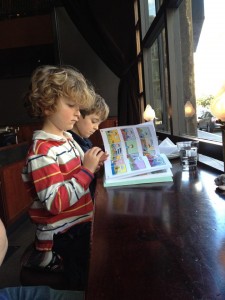
Caroline Grant's sons reading.
We’re very pleased to share Caroline Grant’s Five Family Favorites with you. We’ve been reading her delightful food stories and recipes on her blog Learning to Eat for years. And we’re eagerly awaiting the forthcoming book based on it, The Cassoulet Saved Our Marriage: True Tales of Food, Family, and How We Learn to Eat. Caroline is editor-in- chief of Literary Mama, a fantastic magazine and resource for mothers to return to for inspiration. She’s also the editor of another fascinating anthology Mama, PhD. Thanks to Caroline and her family for sharing their favorite books with us. They have made us hungry for more!
By Maurice Sendak
In the Night Kitchen is the book my sons and I comforted ourselves with when we heard the sad news of Maurice Sendak’s death last month. This quirky story, frequently banned because Mickey slips out of his pajamas and frolics naked in his dreams, is a terrific fantasy of independence and cake baking. We love the bold illustrations and the comic book look of the book, the inventiveness of buildings topped with egg beaters and juicers, and the subway train that looks like a loaf of bread, but most of all, we love that Mickey can stretch bread dough into an airplane and fly wherever he wants until, having fetched the baker’s milk, he slides gently back home and safely into bed.
Ages 3-6 | Publisher: HarperCollins | 1970 | Caldecott Honor, 1971
By Eric Carle
Everyone knows Eric Carle’s wonderful The Very Hungry Caterpillar, but our very favorite Eric Carle book is Pancakes, Pancakes!, in which a boy named Jack asks his mother for pancakes. “I am busy and you will have to help me,” his mother says, a line that sets Jack off on a gentle adventure. One by one, his mother names the ingredients needed and Jack gathers them: he cuts and threshes wheat; grinds the wheat into flour; milks the cow and churns the milk into butter; feeds the hen so she’ll lay an egg; cuts wood for the fire; and finally, steps down into their cool cellar for some jam. I love that Jack’s mother doesn’t drop everything to cook for h
By:
TCBR,
on 4/25/2012
Blog:
The Children's Book Review
(
Login to Add to MyJacketFlap)
JacketFlap tags:
Book Lists,
featured,
Stacey Schuett,
Gail Carson Levine,
Shel Silverstein,
National Poetry Month,
Alan Katz,
Holly Meade,
Leuyen Pham,
Mary Ann Hoberman,
Meilo So,
Kate Coombs,
Danielle Wright,
Matthew Cordell,
David Elliott,
Jackie Urbanovic,
Marilyn Singer,
Michael Emberley,
Amy E. Sklansky,
Edward Koren,
Poetry & Rhyme,
Helen Acraman,
Ages 0-3,
Ages 4-8,
Ages 9-12,
Jack Prelutsky,
Picture Books,
Add a tag
By Nicki Richesin, The Children’s Book Review
Published: April 25, 2012
Beautiful Dreamers
In celebration of National Poetry Month, we’ve hand-picked ten many-splendored new books. Children are born loving poetry from the moment they form their first babbling words to when they begin to tackle more complex rhythms and tongue twisters. As they acquire language and enjoy how it rolls off their tongues, they also gain an appreciation for the beauty of creative expression. Nothing quite tops that moment when they learn to recite their first nursery rhyme. So leave a poem in your child’s pocket and help him discover the appeal of modern poetry.
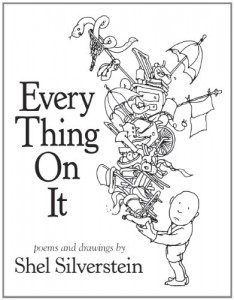
By Shel Silverstein
If you’re like most of us, you may have grown up with Where the Sidewalk Ends, A Light in the Attic, or The Giving Tree on your childhood bookshelf. Master wordsmith and doodler Shel Silverstein invented laugh-out-loud silly rhymes for us to endlessly ponder. Every Thing On It has been posthumously published as a new collection of his irreverent poems and characters drawn with his trademark squiggly offhand style. It’s a great joy to share his nonsense poems with a new generation to puzzle over and love for years to come.
Ages 8-11 | Publisher: HarperCollins | September 20, 2011
By Marilyn Singer; Illustrated by LeUyen Pham
What a winning combination Pham’s playful illustrations and Singer’s amusing verse make in this lovely poetry collection. Bouncing rhyme and pictures of active children at play ensure even the most poetry-adverse child will warm to its magical delights. As Singer’s light-handed verse concludes, “A stick is an excellent thing if you find the perfect one.” We’ve certainly found the perfect book of poetry in this one. For more on LeUyen Pham, check out our interview with her.
Ages 5-8 | Publisher: Houghton Mifflin Harcourt | February 28, 2012
By Kate Coombs; Illustrated by Meilo So
In her first book of poetry, Kate Coombs takes us on a voyage under the sea.
By:
Bianca Schulze,
on 11/2/2010
Blog:
The Children's Book Review
(
Login to Add to MyJacketFlap)
JacketFlap tags:
Alex rider,
Twilight,
Star Wars,
Rachel Cohn,
Stephenie Meyer,
David Wiesner,
David Levithan,
Anthony Horowitz,
James Dashner,
Sherman Alexie,
Cassandra Clare,
Lane Smith,
Rick Riordan,
Markus Zusak,
Jeff Kinney,
Best Sellers,
Maggie Stiefvater,
Diary of a Wimpy Kid,
Suzanne Collins,
Mike Lupica,
Jane O'Connor,
Fancy Nancy,
The Hunger Games,
Robin McKinley,
Mary Ann Hoberman,
Annie Barrows,
John Flanagan,
Becca Fitzpatrick,
Goodie Bag: Books to share and give,
The Ranger's Apprentice,
Lauren Kate,
The Kane Chronicles,
Maze Runner,
Anna Dewdney,
Simon Beecroft,
The Heroes of Olympus,
Percy Jackson & the Olympians,
The Infernal Devices,
Add a tag
By Bianca Schulze, The Children’s Book Review
Published: November 2, 2010
Here’s the scoop on the most popular destinations on The Children’s Book Review site, the most coveted new releases, the bestsellers, and kids’ book events.
THE HOT SPOTS: THE TRENDS
Fall Books for Kids: 2010
Interview with Lian Tanner, Author of The Keepers Trilogy
2010 Children’s Choice Book Awards Nominees
Where to Find Free eBooks for Children Online
20 Sites to Improve Your Child’s Literacy
THE NEW RELEASES
The most coveted books that release this month:
 Diary of a Wimpy Kid: The Ugly Truth
Diary of a Wimpy Kid: The Ugly Truth
by Jeff Kinney
(Ages 9-12)
 Hero
Hero
by Mike Lupica
(Ages 9-12)
 Pegasus
Pegasus
by Robin McKinley
(Young Adult)
 Crocodile Tears (Alex Rider)
Crocodile Tears (Alex Rider)
by Anthony Horowitz
(Ages 12 and up)
 You Read to Me, I’ll Read to You: Very Short Fables to Read Together
You Read to Me, I’ll Read to You: Very Short Fables to Read Together
by Mary Ann Hoberman
(Ages 4-8)
THE BEST SELLERS
The best selling children’s books this month:
PICTURE BOOKS
 Llama Llama Holiday Drama
Llama Llama Holiday Drama
by Anna Dewdney
(Ages 0-5)

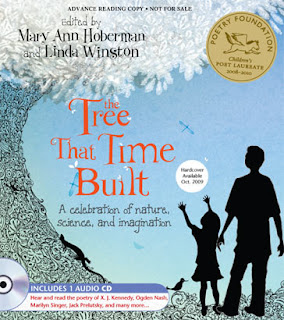
I had planned to write reviews of Halloween poetry books for today. I didn’t get around to doing that for a good reason. Yesterday,
Grace Lin and I went to the Wellesley Booksmith to see
Mary Ann Hoberman and
Linda Winston. Mary Ann and Linda are on tour talking about their outstanding new poetry anthology
The Tree That Time Built: A Celebration of Nature, Science, and Imagination. (Click
here to see where Mary Ann and Linda will be in upcoming weeks.)
After their book signing, Mary Ann and Linda invited Grace and me to have dinner with them and Joanne Myszkowski, who was taking them around to different events in Massachusetts. We had a fabulous dinner at a lovely Italian restaurant just two doors down from the book store. We all had a grand time eating and talking. I didn’t return home until 10:30—so I just didn’t have the energy to work on several book reviews. I decided to post an original poem today instead.
Linda Winston & Mary Ann Hoberman
I’m dedicating my poem Dragonfly to Mary Ann and Linda in honor of their new book. Dragonfly is a poem I wrote for Docile Fossil, a collection that I’ve been working on for the past year.
Dragonfly
by Elaine Magliaro
Long, long ago
before dinosaurs
roamed the land
I flew through prehistoric skies,
my glassy wings glistening in sunlight.
Long, long ago
I printed my image
in mud,
then melted into Earth’s memory.
Now
you can see me
stenciled on the stony pages
of time.

Mary Ann, The "Wild Rose," & Linda
You can read about Mary Hoberman Here:
Mary Ann Hoberman Named Children’s Poet Laureate.
Click
here to read some of my
Wild Rose Reader posts about Mary Ann and her poetry.
********************
At
Blue Rose Girls I have three original double dactyls.
At
Political Verses, I have two new posts this week:
A Poem about the Conservative Bible Project and
Better Duck...It's Dick: A Poem about Dick Cheney's Hunting Prowess.
Kelly has the
Poetry Friday Roundup at Big A, little a.
By:
Administrator,
on 9/25/2009
Blog:
Margo Dill's Read These Books and Use Them!
(
Login to Add to MyJacketFlap)
JacketFlap tags:
Elementary Educators,
Making Personal Connections,
Personal Connections,
Preschool to 1st grade teachers,
Shared Writing,
Books With Social Studies Content,
Un-Forgettable Friday,
Boutavant, Marc,
Hoberman, Mary Ann,
All Kinds of Families,
Marc Boutavant,
picture books about families,
social studies curriculum,
Picture Book,
Mary Ann Hoberman,
Add a tag
*Picture book for preschoolers through first graders
*Families of all sorts are the main characters
*Rating: All Kinds of Families! is a sweet picture book full of interesting ideas about families. No matter what a child’s family looks like, they should feel like they belong with this book by Mary Ann Hoberman.
Short, short summary: All Kinds of Families! is a rhyming picture book with a repeating chorus that pops up throughout the book. Its main goal is to show children that there are all kinds of families–people belong to families but so do letters and numbers and even spoons and forks. It is also a great book for talking about family roles such as parents, siblings, grandparents, aunts, uncles, and cousins. The concept of family tree is introduced briefly. Marc Boutavant’s illustrations are detailed and cute, and children could spend hours looking at them.
So, what do I do with this book?
1. This is the perfect book for a preschool, kindergarten, or homeschool class. Read the entire book through one time and just let children enjoy it. Then read a section at a time because there is so much information on each page about families–in the text and in the illustrations. Allow students to ask questions about the family groups that Mary Ann Hoberman mentions. Discuss the characteristics of a family throughout the reading of the book. This is a great book to use with a young primary grade social studies curriculum.
2. An obvious activity is to have students draw or write about their own families. You can also start a family wall or family bulletin board. Instead of “Star of the Week,” you can have “Family of the Week.” Allow students to bring in pictures of anyone in the family–grandma, grandpa, dogs, cats, sisters, cousins, etc. You can work with students to label pictures. With parents’ help, you could also ask students to make a simple family tree at home and display these in the classroom.
3. Using the examples in the book as models, what are some things in your classroom you could lump together to create families? What about pattern blocks (math manipulatives of any kind), reading books, art supplies, recess equipment, and so on? Create tags on sentence strips for these families with your students and hang them around the room. You can be creative with your tags such as: “Mr. and Mrs. Playground Balls and their five children” or “The Eraser Family” or “The Pencils Clan” and so on.
I've read a couple of pretty quite middle grade fiction books lately, aimed towards the girls in your lives. Enjoy!
Strawberry Hill, written by Mary Ann Hoberman, is an excellent choice for a read aloud with your girls at home. Homey, heartwarming, and sweet, we meet Allie, a young girl, heartbroken to learn her family will be moving to the country, leaving behind Allie's best friend and beloved home. Some excitement is raised, however, when Allie learns that her new street name is Strawberry Hill, leading her to believe she will live in a home surrounded by yummy, sweet strawberries.
 When Allie and her family arrive at their new home, she realizes there are no strawberries, and she now has to make brand new friends and get used to living in a whole different place. Allie goes through what a lot of children go through after moving, making for a comforting and sweet story.
When Allie and her family arrive at their new home, she realizes there are no strawberries, and she now has to make brand new friends and get used to living in a whole different place. Allie goes through what a lot of children go through after moving, making for a comforting and sweet story.
Again, great for a read aloud. Get in your jammies and read with your girls!
Strawberry Hill
Mary Ann Hoberman
240 pages
Middle Grade Fiction
Little, Brown Young Readers
9780316041362
July 2009
 Solving Zoe, written by Barbara Dee, has a lot going on, but in a good, fun way. Zoe is scared of losing her best friend to the drama clique at school, she has a weird boy stalking her and trying to tell her she has a special ability, and she now holds an after-school job feeding reptiles. All that AND she manages to get caught up in some trouble at school that she happens to be the main suspect in.
Solving Zoe, written by Barbara Dee, has a lot going on, but in a good, fun way. Zoe is scared of losing her best friend to the drama clique at school, she has a weird boy stalking her and trying to tell her she has a special ability, and she now holds an after-school job feeding reptiles. All that AND she manages to get caught up in some trouble at school that she happens to be the main suspect in.
Finding her place in the world is proving difficult for Zoe. Her daydreaming is out of control and she feels she lost her best friend. Her grades start slipping and she knows she has to figure out what's going on inside her head before she's in true trouble, both at school and at home. She goes to a school for extraordinary children, but Zoe feels nothing but ordinary. Needing some help in solving her own life questions, Zoe befriends the strange new boy, who helps her to discover what and who she is meant to be.
There was a whole lot going on in this book, but not so much that the reader can't follow or won't be able to really get to know Zoe. She is like any typical preteen in the manner that she is slightly lost in the world, unable to solve the mystery of where she fits in.
A nice choice for libraries or as a gift for a preteen girl.
Solving Zoe
Barbara Dee
240 pages
Middle Grade Fiction
Margaret K. McElderry Books
9781416961284
April 2009
To learn more about either title, or to purchase, click on the book cover above to link to Amazon.
 I’m pleased to announce that the Poetry Foundation has selected the second Children’s Poet Laureate: Mary Ann Hoberman. At a lovely dinner last night at the Pritzker Pavilion in Millennium Park in Chicago, I was honored to be in attendance when she was presented with her medal and made a beautiful acceptance speech. Her husband and four grown children (from Paris, New York, and LA) were there to support her, even joining in on reading a poem at the end of her talk, “The Witch and the Broomstick” from one of her You Read to Me, I’ll Read to You collections.
I’m pleased to announce that the Poetry Foundation has selected the second Children’s Poet Laureate: Mary Ann Hoberman. At a lovely dinner last night at the Pritzker Pavilion in Millennium Park in Chicago, I was honored to be in attendance when she was presented with her medal and made a beautiful acceptance speech. Her husband and four grown children (from Paris, New York, and LA) were there to support her, even joining in on reading a poem at the end of her talk, “The Witch and the Broomstick” from one of her You Read to Me, I’ll Read to You collections.
With 45 poetry books published, a National Book Award, and the NCTE Poetry Award for her body of work, Hoberman spoke about her life as a young writer, a child in a family that moved a lot, enabling her to place her memories geographically—ideal training for a poet, in her opinion. She loved fairy tales in particular and still owns her three favorite collections and planned to be a reporter when she grew up—even dashing about in a snazzy red MG thinking of herself as “Mary Ann Hoberman, Girl Reporter.”
 However, as life took another turn, she found herself married and writing and proofreading on the side. She made up songs and verses for her babies (her oldest daughter confirmed this memory!), and while pushing the kids in a stroller, a phrase popped into her head: “all my shoes come in twos,” the nugget of which would become her first book, to be illustrated by her husband, Norman. She read a poem from this collection for the audience and talked about her emergence as a poet, rather than reporter or fiction writer, claiming that “the house of children’s poetry has truly provided a house for me.”
However, as life took another turn, she found herself married and writing and proofreading on the side. She made up songs and verses for her babies (her oldest daughter confirmed this memory!), and while pushing the kids in a stroller, a phrase popped into her head: “all my shoes come in twos,” the nugget of which would become her first book, to be illustrated by her husband, Norman. She read a poem from this collection for the audience and talked about her emergence as a poet, rather than reporter or fiction writer, claiming that “the house of children’s poetry has truly provided a house for me.”
With a nod to other smart, humorous poets that she believes have led us “from didacticism into sunlight” in children’s poetry (Edward Lear, Lewis Carroll, Robert Louis Stevenson, and A. A. Milne, “bookended by Mother Goose and Dr. Seuss”), she proceeded to delight us all with readings of several of her poems, including her “absolute favorite,” “Brother,” which she read a second time so fast it became a tongue twister, a favorite approach among child audiences, she grinned.
We joined in on “Snow,” and she observed that many of her poems are chant or song-like. She followed with “Yellow Butter,” hamming it up with a mouth-full-of-peanut-butter-style reading of the finale. On a somewhat more serious note, she acknowledged that some of her poems are inspired by the work of others, particularly by their rhythms. She cited Rudyard Kipling’s poems that accompany his Just-So Stories as one example and read “Anthropoids,” her tribute to Darwin.
 I was blown away when she read a poem in my honor that I had mentioned was one of my all-time favorites by ANY poet, “Mayfly,” which she felt was also one of her personal best. Most of these poems came from The Llama Who Had No Pajama: 100 Favorite Poems (which was generously provided for each guest), but her final poem was an original composition for the occasion—a “Villanelle for Children’s Poets” with the repeated lines, “the craft of children’s poetry is its art” and “nonsense at its heart,” among other gems. It was perfect and moved us all.
I was blown away when she read a poem in my honor that I had mentioned was one of my all-time favorites by ANY poet, “Mayfly,” which she felt was also one of her personal best. Most of these poems came from The Llama Who Had No Pajama: 100 Favorite Poems (which was generously provided for each guest), but her final poem was an original composition for the occasion—a “Villanelle for Children’s Poets” with the repeated lines, “the craft of children’s poetry is its art” and “nonsense at its heart,” among other gems. It was perfect and moved us all.
Once again, thank you to the Poetry Foundation, and particularly Penny Barr, for making children's poetry such a priority. The Children's Poet Laureate receives a check for $25,000 and a lovely medallion featuring the cartoon Pegasus characterized by James Thurber encircled with the words "Children's Poet Laureate" on one side and a line of an Emily Dickinson poem on the other side, "Permit a child to join." The Children's Poet Laureate will serve as a consultant to the Foundation for a two-year period and will give at least two public readings during his/her tenure. Mary Ann says she has “about 50 ideas” of possible poetry projects, so stay tuned for more updates.
 [Note: I wrote about the FIRST Children’s Poet Laureate on Sept. 29, 2006: Prelutsky is Poet Laureate. Jack (and his wife Carolyn) were also in the audience tonight as he passed the poetry torch and became “Poet Laureate Emeritus”-- in his words.]
[Note: I wrote about the FIRST Children’s Poet Laureate on Sept. 29, 2006: Prelutsky is Poet Laureate. Jack (and his wife Carolyn) were also in the audience tonight as he passed the poetry torch and became “Poet Laureate Emeritus”-- in his words.]
Poetry Foundation head John Barr called poetry the “last source of magic” in our world today and we definitely felt the magic of poetry this evening!
For more poetry in general, join Poetry Friday, in progress, at Anastasia Suen's Picture Book of the Day.
Picture credits: nationalbook.org;www.poetryfoundation.org;
diypublishing.blogspot.com;www.vintagechildrensbooksmykidloves.com











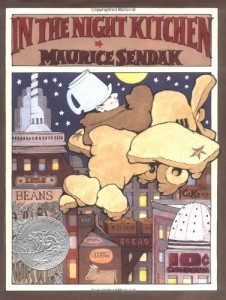
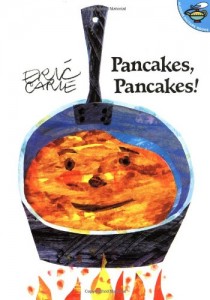

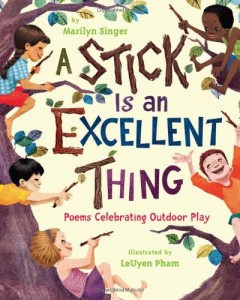















Loved hearing all about your wonderful evening, Elaine. Swoon! Mary Ann and Linda's new book looks fascinating.
Also enjoyed your Dragonfly poem, especially the "glassy wings glistening in sunlight." Excited to hear about Docile Fossil. :)
And did you say Italian food? Yum! :9
Jama,
It was truly an enjoyable evening. There's nothing like good food and great company. Actually, the food was better than good. The mushroom-filled lune were divine--as was the chocolate budino.